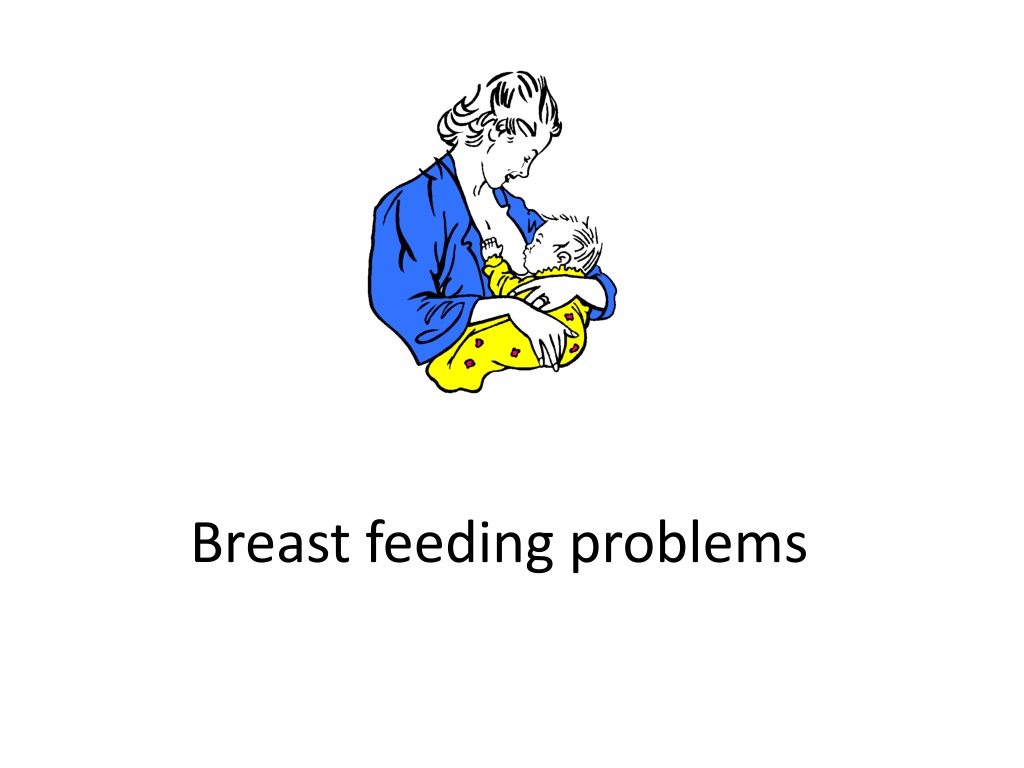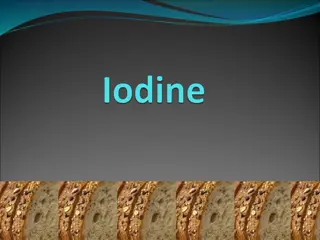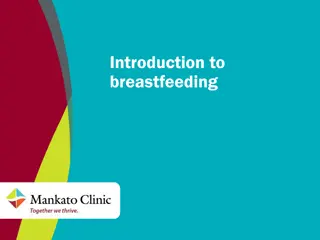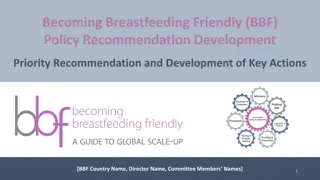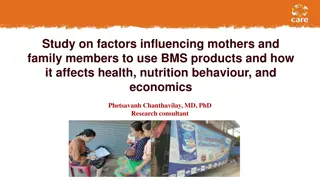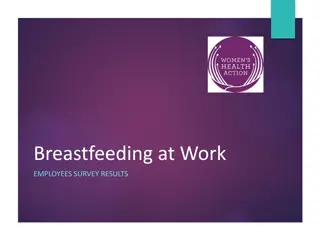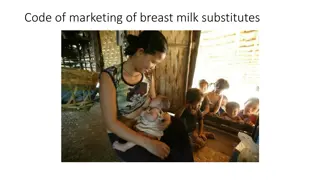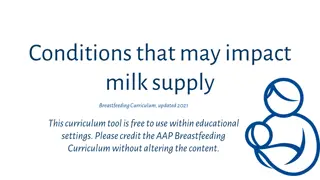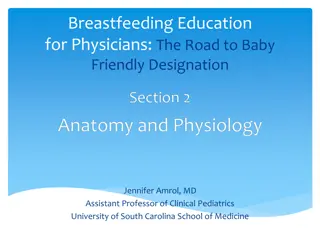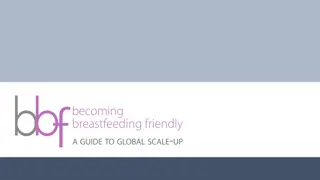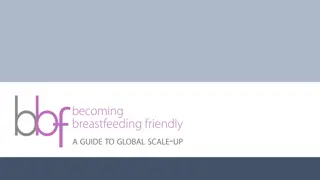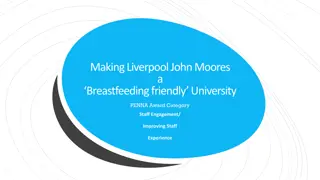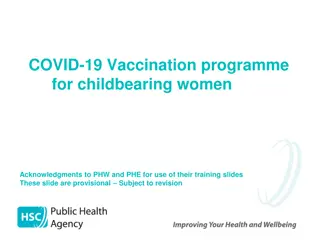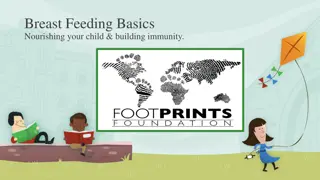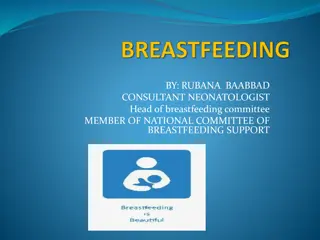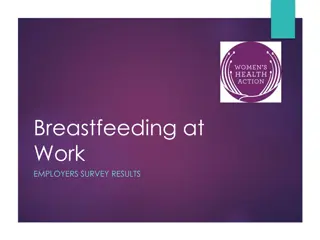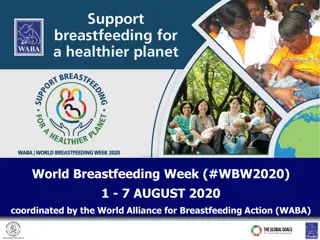Breastfeeding Common Problems and Solutions
Breastfeeding can present various challenges such as latching issues, cracked nipples, engorgement, mastitis, low milk supply, thrush, and inverted nipples. Effective strategies include proper positioning, soothing gel pads, hand-expressing milk, antibiotics, frequent nursing, antifungal treatment, and using nipple shields. Understanding and addressing these common problems can help make the breastfeeding experience smoother for mothers and babies.
Download Presentation

Please find below an Image/Link to download the presentation.
The content on the website is provided AS IS for your information and personal use only. It may not be sold, licensed, or shared on other websites without obtaining consent from the author. Download presentation by click this link. If you encounter any issues during the download, it is possible that the publisher has removed the file from their server.
E N D
Presentation Transcript
Latching issues Common problem, especially first time moms Gently rub nipple under baby s nose for a wide-open mouth. Then place baby s bottom lip well below the nipple, not at the base Bring baby onto the breast, rather than putting breast in baby s mouth.
Cracked nipples Can be painful, but not serious Position baby properly mainstay of treatment Also soothing gel pads, nursing ointments or mild painkillers Wash with soap and water at least twice a day entry for bacteria
Breast engorgment Full, firm, taut, uncomfortable for mom Can happen if too long between feedings or if baby isn t draining breasts adequately Hand-express before feeding helps to get the milk flowing and soften the breast - easier for baby to latch and access milk Nurse regularly
Mastitis Bacterial infection - flu-like symptoms such as fever / pain Common within the first few weeks after birth Can accompany other breastfeeding problems, such as clogged milk ducts, engorgement or even cracked nipples - which allow bacteria to enter the breast, causing the infections Needs antibiotics Must also frequently empty breasts
Low milk supply Supply-and-demand system The more one nurses or pump, the more milk the body should make But sometimes it does not work like this for one or more reasons Frequent nursing and pumping during the day can help Stay hydrated and well nourished when nursing Medication may be needed
Thrush Yeast infection in baby s mouth can spread to breasts Red, shiny, flaky nipples Itching or breast pain Needs an antifungal to put on nipple and in baby s mouth Wash bras, clothing and nursing pads daily in hot water and vinegar to kill yeast spores
Inverted nipples Gently pinch areola with thumb and index finger if it retracts rather than protrudes - inverted nipples May need latching assistance with lactation consultant Can use breast pump to get milk flowing Nipple shields - thin, silicone shields that fit over the nipple to help the nipple protrude more - makes latching easier
